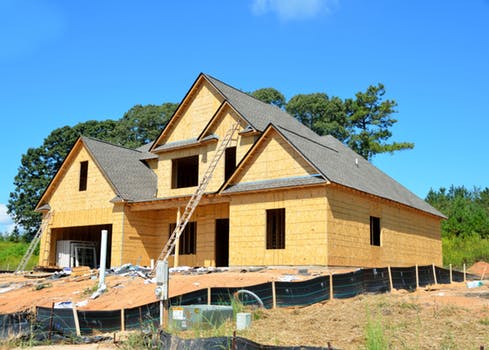
Despite a worsening pandemic, economic disruptions and a divisive political environment, the U.S. housing market continues its unstoppable forge ahead.
Demand for new homes (+41%), existing homes (+26.6%), vacation homes (+100%) and new mortgage loans (+33%) continues to illustrate the positive impact of low interest rates on purchasing decisions.
New Home Sales Up 41 Percent from Last Year
Sales of new homes are up 41.5% from the same period a year earlier, reflecting record low mortgage rates and a pandemic-induced push to the suburbs, according to a joint statement by The U.S. Census Bureau and the U.S. Department of Housing and Urban Development.
The median price of a new home sold was $330,600 versus $322,400 a year earlier the report said.
“Buyer traffic remained strong in October even as the country’s attention was focused on the elections and policy issues going into 2021,” said NAHB Chairman Chuck Fowke. “Mortgage rates remain low and builder confidence is at an all-time high indicating that demand remains steady and sales will remain solid.”
Regionally, on a year-to-date basis new home sales were up in all four regions: 29.9 percent in the Northeast, 29.8 percent in the Midwest, 18.5 percent in the South, and 20.1 percent in the West.
Existing Homes Sales Up 26.6 from Last Year
Existing home sales rose year-over-year, up 26.6% from a year ago (5.41 million in October 2019), reported the National Association of Realtors (NAR).
“Considering that we remain in a period of stubbornly high unemployment relative to pre-pandemic levels, the housing sector has performed remarkably well this year,” said Lawrence Yun, NAR’s chief economist.
While coronavirus-induced shutdowns hindered virtually all markets, Yun says the housing industry has mounted an impressive rebound.
“The surge in sales in recent months has now offset the spring market losses,” he said. “With news that a COVID-19 vaccine will soon be available, and with mortgage rates projected to hover around 3% in 2021, I expect the market’s growth to continue into 2021.” Yun forecasts existing-home sales to rise by 10% to 6 million in 2021.
The median existing-home price for all housing types in October was $313,000, up 15.5% from October 2019 ($271,100), as prices increased in every region. October’s national price increase marks 104 straight months of year-over-year gains.
New Home Mortgage Applications Surge 33 Percent in October
U.S. mortgage applications for new home purchases increased 32.9 percent compared from a year ago, according to a report by the Mortgage Bankers Association. Compared to September 2020, applications increased by 5 percent.
“October is usually when home buying activity slows as the weather turns colder. However, this fall has been a different story, with delayed activity from the spring, and more households seeking larger homes with more indoor and outdoor space, driving demand. Additionally, the average loan size in October increased to $355,684, a new survey high since 2013.”, said Joel Kan, MBA’s Associate Vice President of Economic and Industry Forecasting.
By product type, conventional loans composed 71.8 percent of loan applications, FHA loans composed 17.6 percent, RHS/USDA loans composed 0.8 percent and VA loans composed 9.9 percent. The average loan size of new homes increased from $354,316 in September to $355,684 in October.
Demand for Vacation Homes in U.S. Surges Over 100 Percent Annually in October
Sales of vacation homes are soaring, even as millions of Americans grapple with financial devastation triggered by the coronavirus pandemic. In October, demand for second homes skyrocketed 100% from a year earlier—the fourth triple-digit increase in the last five months, according to a new report from Redfin. That outpaced the 50% increase in demand for primary homes.
“With mortgage rates at all-time lows and offices shut down across the country, the dream of having a second home outside of the city is becoming a reality for many wealthy Americans,” explained Redfin lead economist Taylor Marr.